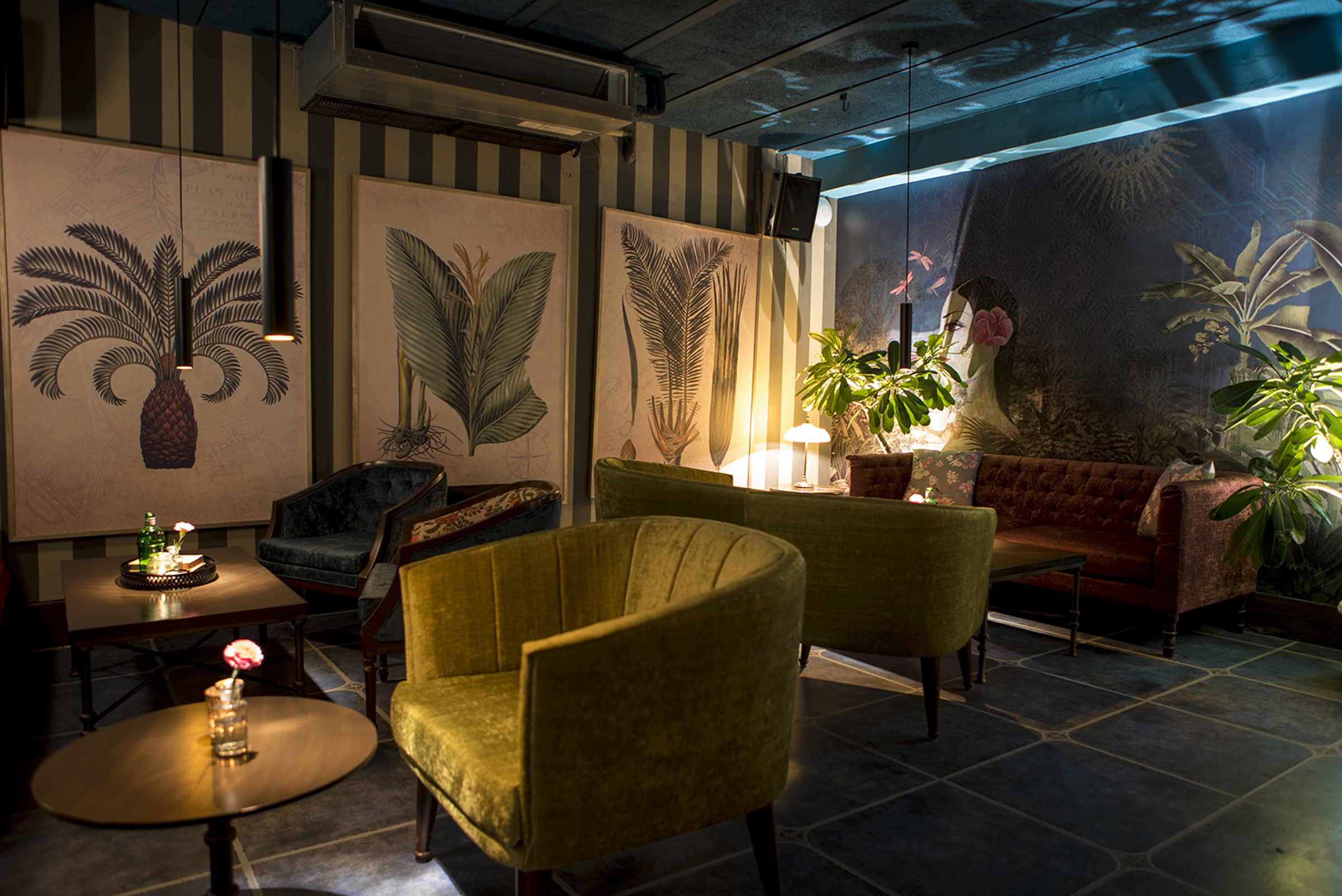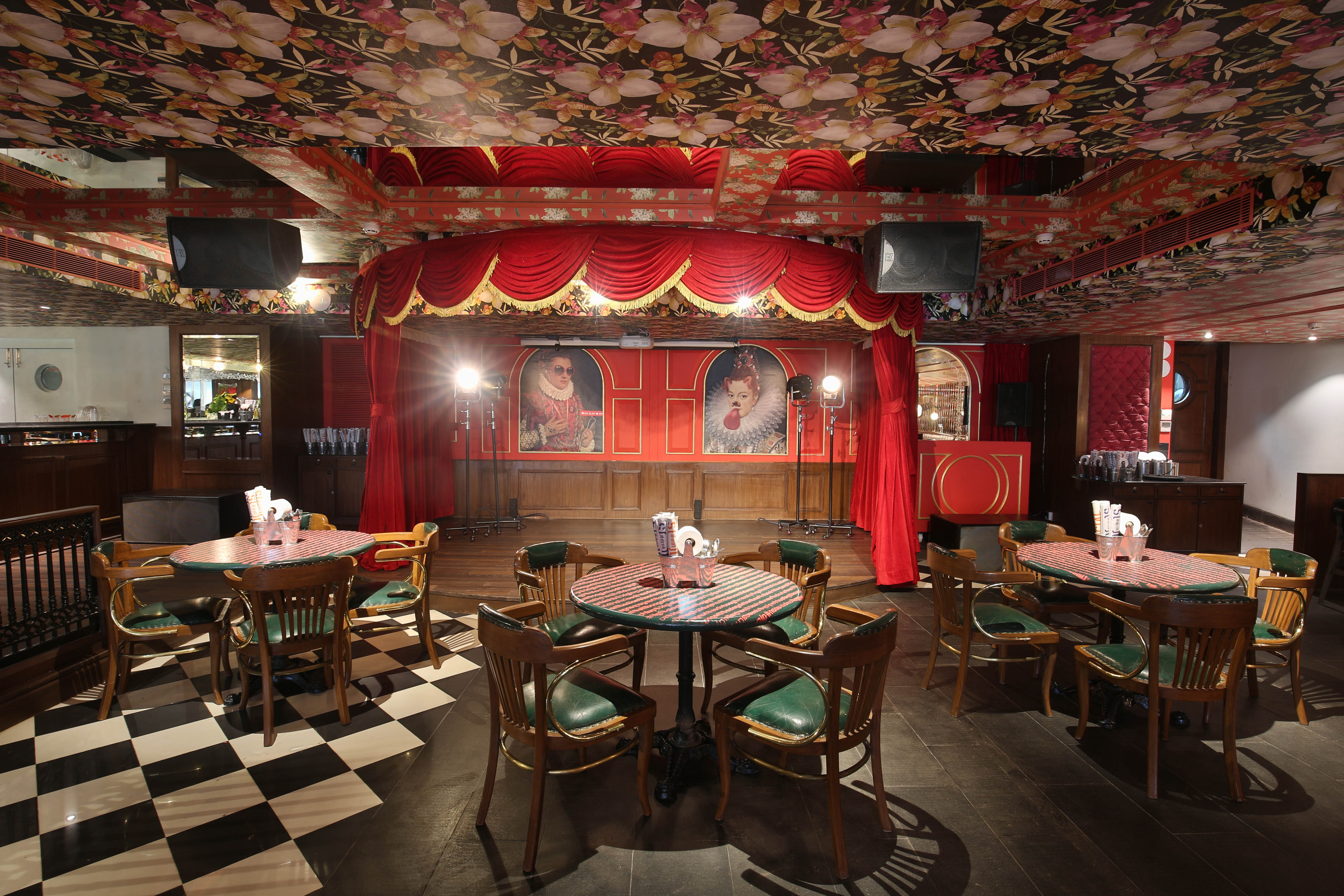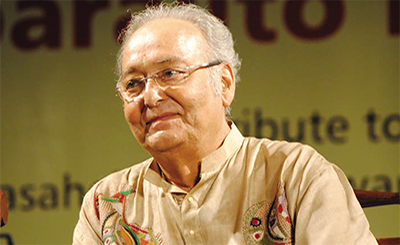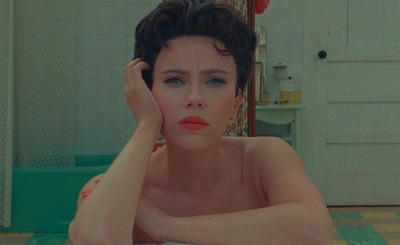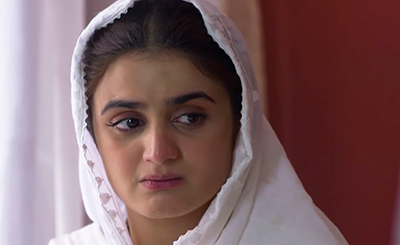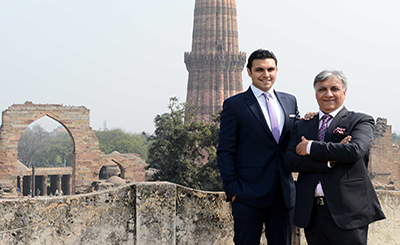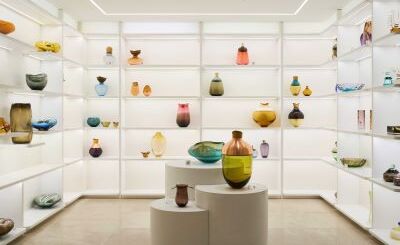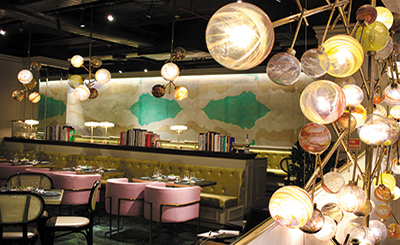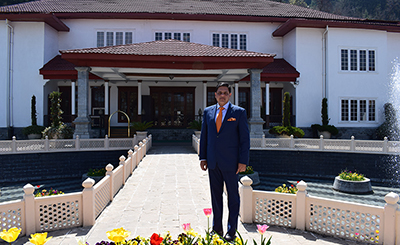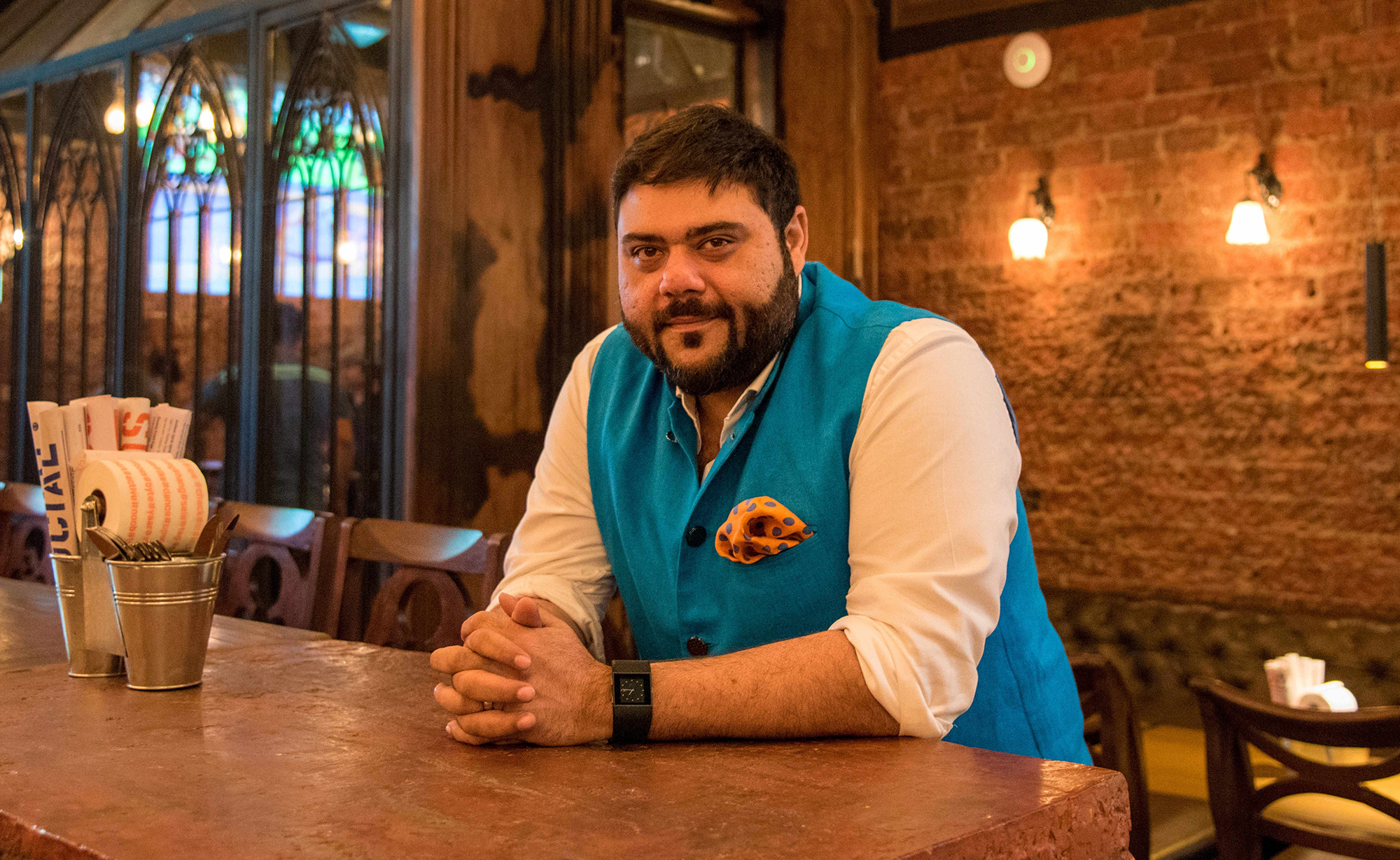
Riyaaz Amlani. Photos: Impresario Entertainment and Hospitality Pvt Ltd
He doesn’t come from a food-first family, nor has he studied the culinary craft professionally. And yet, Riyaaz Amlani seems to understand Indian appetites and dining aspirations like few others have. Priya Pathiyan tracks his trajectory of success and finds out exactly what it is that makes him one of India’s foremost restaurateurs…
2017. Slink & Bardot. The door to a ground floor cottage in a fishing village transports you to a charismatic French lounge that’s dream-like in its abundance of tropical motifs on walls, ambient art deco lighting and downtempo Jazz and yet comforting in its over-stuffed sofas and delightful little dishes redolent of tarragon. While the only escargot in the house is the little snail embroidered on Chef Alexis Gielbaum’s chef whites, the man behind the eatery’s modern French menu, and the mesmerising musical playlist belongs to manager Nick Harrison, the mood invites you to muse and meander and — most importantly — mingle.
2014. Social. The industrial-feel design with exposed brick, concrete columns and bare-bones furniture appeals to the millennials milling around. The comfort food and creative drinks are not the reason why people are flocking to this brand-new brand. The giant hashtag #connect painted on a wall gives you the cue… it ironically invites you to look up from social media and actually connect face-to-face here, offline.
2009. Smoke House Deli. An all-day café with an eclectic menu that veers from healthy to hearty and everything in between. The space? White and bright. Cheery and light. And yet, many hidden depths behind those permanent marker sketches by the Basrai brothers of Busride, Ayaz and Zameer, which run riot over the walls and objects of interest. A tip of the hat to each location, secret stories that can be unlocked using QR codes on smartphones to reveal fascinating facts about where you are. Encouraging an adult game of hide and go seek. Their website giving you a chance to play an interactive Tic Tac Toe between Men and Muffins. A playful way to engage.
2001. Mocha. Morocco comes to Mumbai via Manhattan. Chor Bazaar chic meets an eclectic East Village aesthetic. The city’s youth, brought up on a steady diet of sitcoms like F.R.I.E.N.D.S., are soaking up single-origin coffee served in an authentic French Press and gaining streetcred by sucking on ornate hookahs. Their high comes from finally having a hangout they can call their own. Where they can binge on everything from burji-pav to Maggi noodles and pink-sauce penne to poutine. And while it isn’t spoken about so much, bonding is big on the agenda set by the sign outside — Coffee & Conversations.
Riyaaz Amlani, CEO and Managing Director of Impresario Entertainment and Hospitality Pvt Ltd, who has 17 years of creating more than 50 successful food and beverage establishments across the country, has a clear focus. “I love the café space. I’ve been there since the beginning. Mocha was a café, so was Salt Water Café, so are Smoke House Deli, The Tasting Room, Prithvi Café, Social… For me, they’re all a manifestation of the need to be social.” He elaborates, “The café in its own form has evolved but the need for the café has always been there. Be it the India Coffee Houses, the English inn, the beer garden, the French café, the evening chai ki tapri or the college canteen. It’s kind of a fulcrum for social interaction. Almost all casual human interactions have food or drink involved. How people gather around and create bonds over food is really exciting to me.”
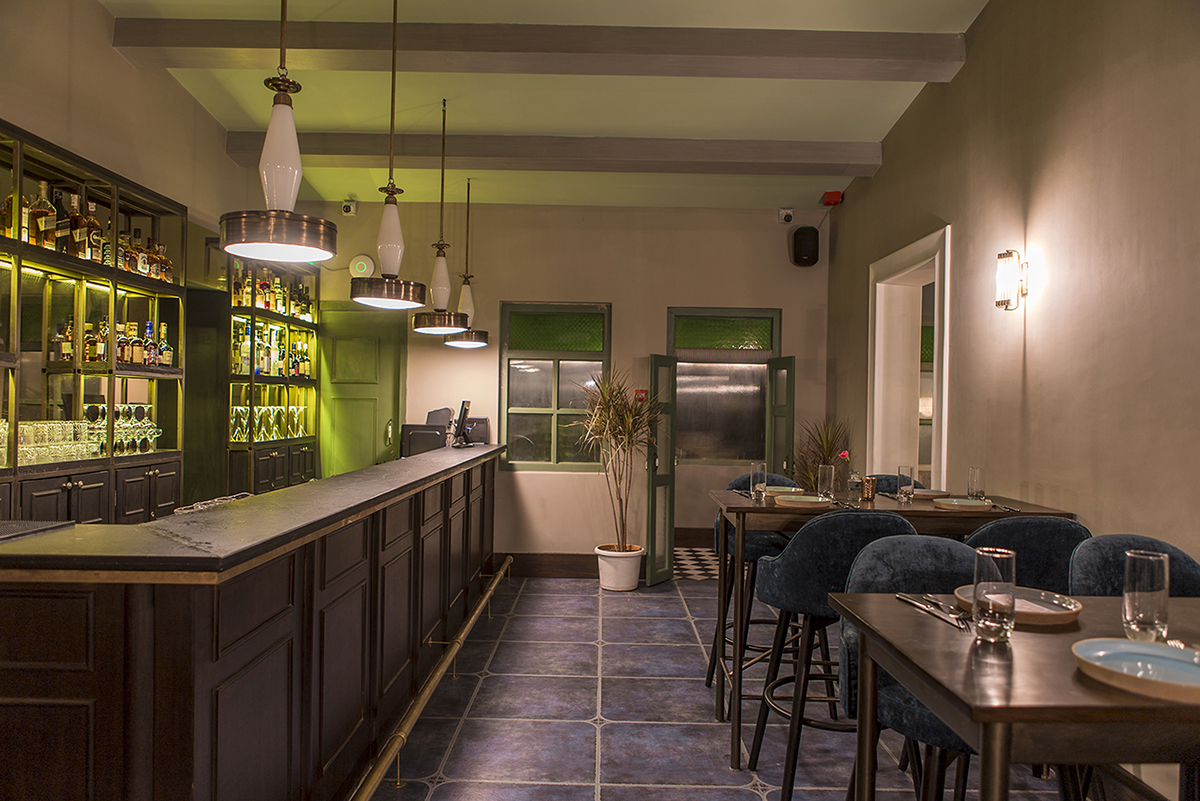
Slink & Bardot transports you to a French lounge that’s dream-like in its abundance of tropical motifs on walls ambient art deco lighting and downtempo jazz
And that is the crux of his brilliance as a restaurateur. This understanding of what makes people tick, what makes them make certain choices. Amlani believes this understanding comes from listening to the customer really hard. He says, “When you’re seeing consumption happening, you really try to understand why they’re consuming something. Why were people going to Indigo or Olive or Wild Orchid or Go Bananas or whatever place was popular back in the day? I was keen to understand why they were making that purchase decision, even if the place was very far away, or the drinks were expensive or the food sucked. What was driving them to go there? If you look hard enough, the answer comes to you. You realise that the real need is not hunger alleviation or thirst quenching. It’s deeper than that. That’s the payback the customer is looking for. He’s not looking to fill his stomach, but some gap, perhaps a social need he wants to bridge. It’s important that you understand that you’re not really selling a commodity. What you’re really selling is romance. What you’re doing is giving someone a chance to be different that day.”
Amlani explains how purchase decisions are made on mood. While some restaurants are romantic in nature, others are elegant, urban, relaxed or easy-going. Depending on what frame of mind you’re in, you choose to go to a certain type of place. “If you feel like dressing up today, there are eight or nine restaurants you can think of. If you feel like going somewhere in your flip-flops, there are eight or nine others you pick from. The trick for the restaurateur is to know what moodspace you’re catering to and then go after that,” he emphasises. As he points out, a lot of times people make the mistake of trying to be everything to everyone. A savvy restaurateur has to be very clear whom he wants to go after and what mindspace he wants the customer to come to him with.
Shoe-in for success
The South Bombay boy, who self-confessedly grew up ‘on the wrong side of the tracks’ in Byculla, has always been a keen observer. “I always found the la-di-das in college to be a little amusing. I was a Byculla boy who had seen the mean streets a little bit more, was aware of ground realities.” Starting off as a shoe salesman at the age of 14 while still in high school, he quickly understood customer motivation. “I was a good salesman. I knew all the tricks of vanity. My superpowers lay with the women,” he smiles, going on to describe how he set up his own shoe shop within a year and all that it taught him. “Among many other things, it made me see that Bombay was not a homogenous market. And it taught me how to hustle and not be hustled. I was always enterprising and I had managed to get an in with the union leaders in the Panvel shoe manufacturing industry and started dealing with industrial footwear supply. I learnt how to crack that market very quickly and for a while I did that hustle. I had a guy come in and reject all my shoes. I remember laughing as I knew he was trying to hustle me,” he reminisces. “Having a business and looking after a household makes you grow up quicker. But I never felt that I had lost out on anything. In fact, I felt that I had an advantage over the others,” says the man who bought his first 1952 Italian Fiat before he was even a graduate. “I thought it was the coolest thing. If you squinted long and hard enough, it looked like a Porsche! Bought it for Rs 10,000 and sold it for Rs 15,000 by the kilo for scrap. My college friends still remember it. We’d pack 20 of us in and drive around the colleges. Or get into drag races with the Maruti 800! I didn’t think of myself as a shoe shop owner but as the guy who has his own business, is making his own money and pays his own way everywhere.”
Birth of a salesman
That spirit of enterprise has held him in good stead. But while ideas and hard work aren’t in short supply, success doesn’t come to everyone the way it seems to adhere to Amlani. What sets him apart from the rest, we wonder aloud. “I really don’t think there’s anything special about me. We got lucky, I suppose, when Kiran (Salaskar) and Varun (Sahni) and I each put in about Rs five lakh and started Mocha. We started off at the same time as Koyla, Fire & Ice, Athena, Moshe’s… a bunch of us started together but a lot have fallen by the way side. It’s been a rough time,” he muses and then sits up to express a pet peeve animatedly, “But I’m always surprised when people don’t bring their A-game to a restaurant they are setting up. Anybody can do a restaurant but I get surprised when they get lazy about it or don’t think everything through…. when there are small compromises. I always wonder why they are not bringing it like they can.”
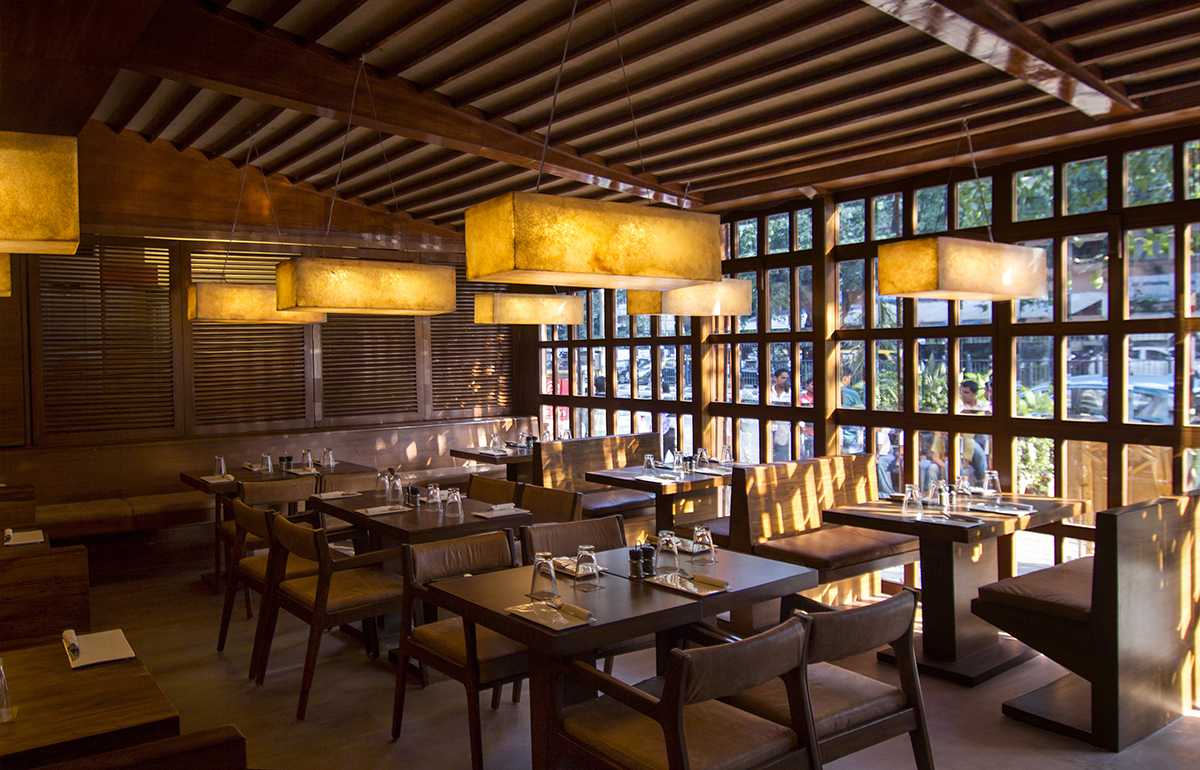
Salt Water Cafe, Churchgate, Mumbai
Is it humanly possible for someone to micro-manage an empire as vast as his, we quiz. “Not quite an empire, I’d call it a small fiefdom,” he twinkles, before replying more seriously. “I’m not really good at operations and am really horrible at finance. Thankfully I’ve got great people looking after those aspects. I’m more involved in the development stage… like the light should be this or the fabric needs to be that. Not exactly an ideas and concepts guy, but I guess you just need to be able to give a good brief to good, creative people and orchestrate the whole thing. A lot of design happens by saying no. That this won’t work here or is too much. It’s like being a conductor. To get all these diverse elements to come together in a manner which is not discordant. That’s important to me. I think that everything has a tonality and everything has to fit within that tonality.”
Idea achha hai!
Each Smoke House Deli is like an illustrated storybook about the community it brings together. Every Social is created with a theme that resonates with the area it is located in. He is building chains and scaling up all the time, but isn’t falling prey to repeating the recipe of success with every new property, instead adding a rich layer of complexity and creativity to his bouquet of offerings each time. Where do his ideas come from? “The seed of the idea can come from anywhere, a song, a place, another restaurant. I spend a lot of time being curious about things. If you have a natural disposition towards things that are aesthetically pleasing, or that would inspire you or move you. I just have a bigger radar for things like that than others perhaps. I’m very quick to soak in stuff like that. I get the thought behind it and once you understand the thought process behind the creative approach, then things just fall into place.” And what happens when the concepts are grabbed and regurgitated, cruelly copied in less time than it takes to file an Intellectual Property (IP) law infringement? Is imitation really the best form of flattery, we ask. “Of course, I feel flattered but I also feel bad for them. You have your own canvas. The beauty of any true work of art is when you have funnelled your own inspiration through your paradigm. You are the sum of your own experiences, all you touch and all you read, and that makes you uniquely you. When you put that lens into your work, you can create something that is unique, which has the power to touch somebody or have them relate to you. Those who copy blindly somewhere miss that point. They don’t use their own canvas or forget to use their own lens. That’s sad. They miss out on the joy of creating something. There’s a very different sort of joy in following through on your gumption rather than constantly looking to see what someone else is doing. I feel the public at large is also impoverished for it because they are getting watered-down versions when they could get the original experience. For the hospitality scene to truly evolve, there needs to be a larger pool of talent pulling things in different directions.”
Amlani speaks sombrely about how Intellectual Property law, though it exists in India, is unenforceable as it is too slow. “An IP violation could take about eight years to resolve. By the time you establish your right over one imitator, people have already done it and discarded it. It’s irritating because then you think you can’t repeat it now because everyone is doing it.” But being Mr Bright Side, he’s quick to point out that in a way it’s also a blessing because you get shaken out of complacency. “Now it’s almost like an instinct to not do what I’ve done in the past. In the sense, there’s almost this kind of need to break the mould a little bit each time. The only way you can actually prevent people from copying you is to not to be predictable. If you don’t have a replicable model and do each space differently, then they can’t keep up,” he laughs.
Rewarding career
Keeping up with this Impresario certainly isn’t easy. Apart from innovative ideas and sheer numbers, they are scaling up financially again. “We’ve raised private equity two rounds and we’re about to raise a third round,” he says, not divulging much about the possibility of an impending strategic tie-up with L Catterton. While the terms of this alliance are still under discussion (according to an article in The Economic Times in June, the firm is looking to buy a controlling stake in Amlani’s company, the valuation being considered being around Rs 600 crore), industry insiders believe that this will see even more growth for Impresario. While revenues have gone beyond the Rs 200-crore mark, employee numbers have ballooned proportionately. Amlani describes it best, “Soon after we started Mocha, we did an employee football match with Kitchen versus Service teams and we just had five-a-side. The last time we did it (about two years ago) we had two and a half thousand people filling a football ground in Bandra! It’s nice to see how the company’s grown. Sometimes you literally have to pinch yourself and ask, ‘Really? You have so many people working for you?’ It’s also a sobering thought that you’re responsible for all their livelihoods and well-being.”
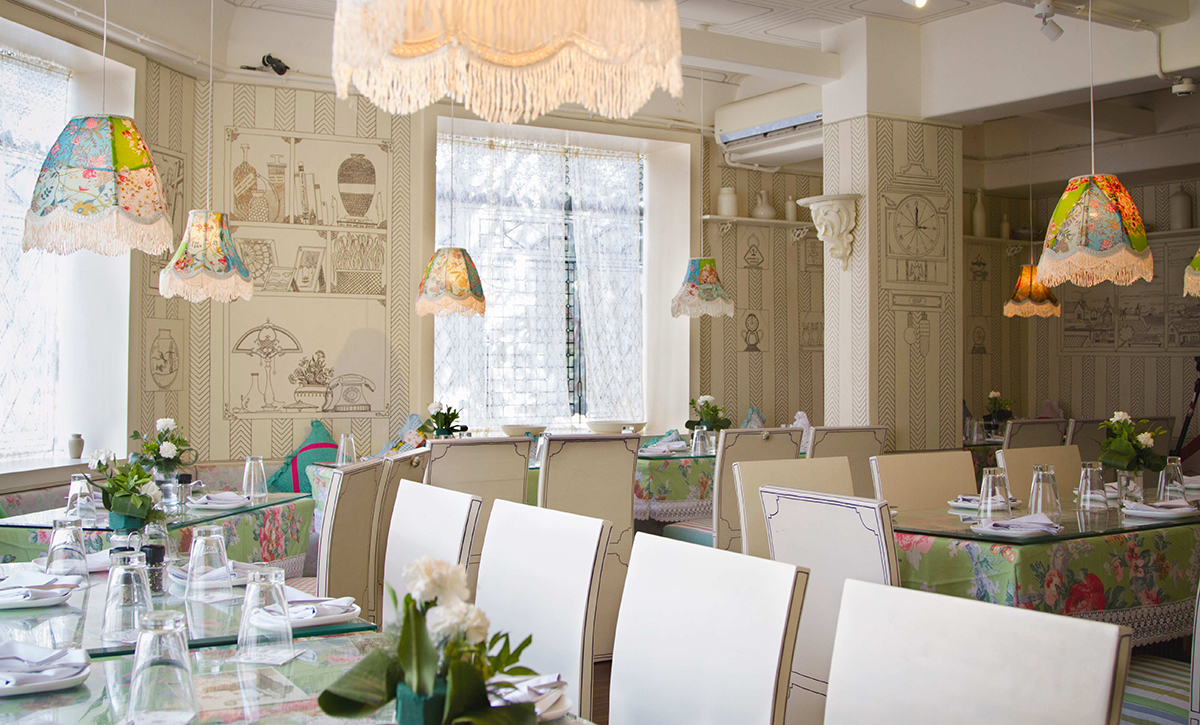
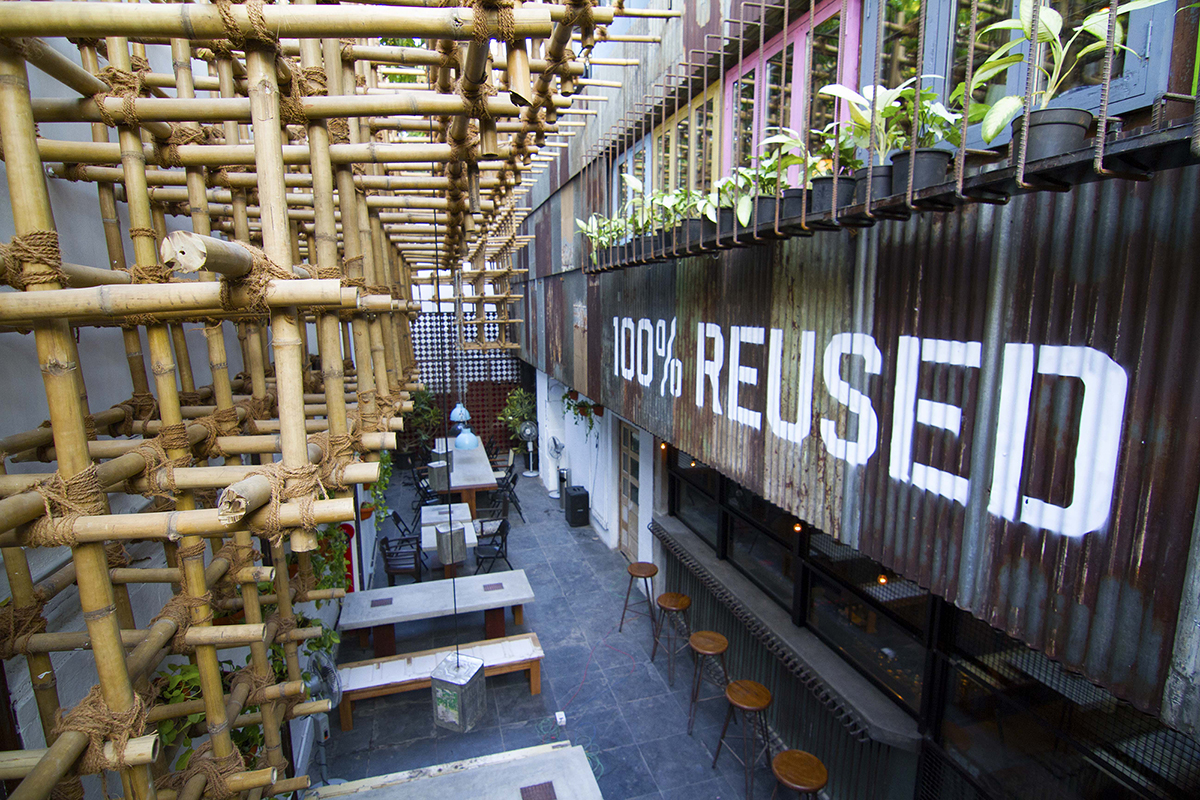
Smoke House Deli (top), Pali Hill; Social (above), Khar, Mumbai
Speaking of sobering thoughts, we ask him whether he ever experiences a sense of doubt. “Every day!” he quips, adding, “Of course, you have your moments of doubt. You have highs, you have lows. You do question yourself. The time spent away from family, is it worth it? (The 42-year-old Bandra resident is married to lawyer-musician Kiran Chaudhry and has two young sons named Khayaal and Danyaal). Not having enough time for yourself. Working for the restaurant community and keep running into dead ends. I think for every 10 seconds of bliss of doing what you love doing, there’s 23 hours, 59 minutes and 50 seconds of questioning. At the end of the day, you have to ask yourself was it worth it? In our business fortunately, gratification is more instantaneous. You walk into your restaurant, a room full of happy people, somebody comes and tells you we met here, my husband proposed to me there and we used to court there. You become part of people’s lives in a very intimate way and that is very rewarding. In my line of work, if not three months, at least in six months, I’m going to see the fruit of my efforts, some people really enjoying it.” And now that he’s moving deeper into the space of creating more intimate eateries such as Slink & Bardot or preserving slices of city culture through ventures such as St Jude Bakery, he’s going to have a lot more of it, we presume.
Perception management
While there’s definitely gratification like that, there are also challenges, as it’s a decidedly tough business. “A lot of people view this business as indulgent not for what it is, a massive employment generator, the glue that holds the community together, the thing that makes the city more liveable. People don’t see that and make life really difficult for you as a restaurateur,” he rues. For the last three years, as president of the National Restaurant Association of India (NRAI), he has been trying to change that perception but he fears that it’s very deeply ingrained.
“Prejudices such as ‘Acchhe log restaurant nahin jaate’ or ‘ghar ka khaana is best’. We always have roti at home, no matter who makes it, so eating out is looked down upon. People think that if someone is a restaurateur and selling alcohol, he must be a sub-standard part of society, a fringe element! It’s not going to be as easy as I thought it would be. When I first took over as President of NRAI, I was all set to make many changes. Now it’s more like, ‘I wonder if this will ever happen. Will people start seeing the value?’ In terms of business, the hospitality industry is about 2.5 the size of telecom and IT in this country and 1.5 times the size of the Indian Railways. In terms of employment generated, we’re about 4 times that of IT. Tech Mahindra is laying off 30,000 people and that’s big news. But the highway ban has laid off 200,000 people and nobody is talking about that. I’m failing in bringing this to the attention of the people,” he gets into an introspective mood. Just a few days after we meet him for this interview, the Supreme Court clarifies that the ban on the sale of liquor within 500 metres of state or national highways does not apply inside city limits. He is being heard after all. Amlani and the NRAI have persisted and succeeded in saving many a business.
Page
Donate Now
More from Culture
Comments
*Comments will be moderated




